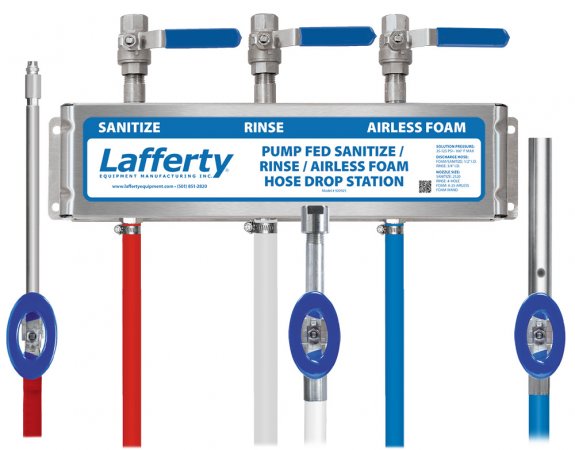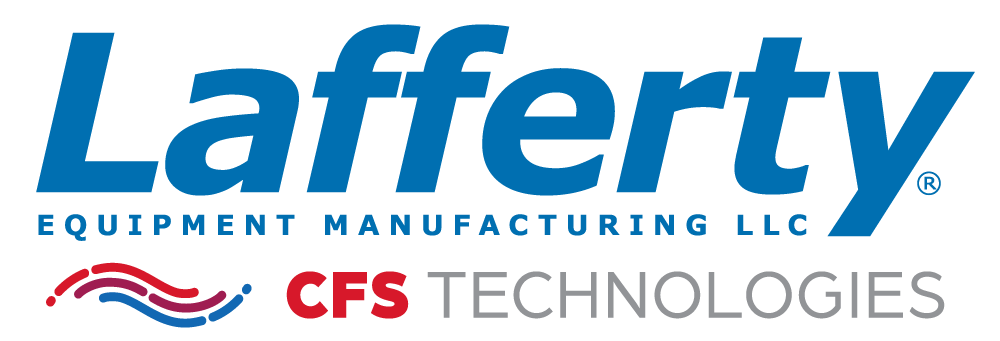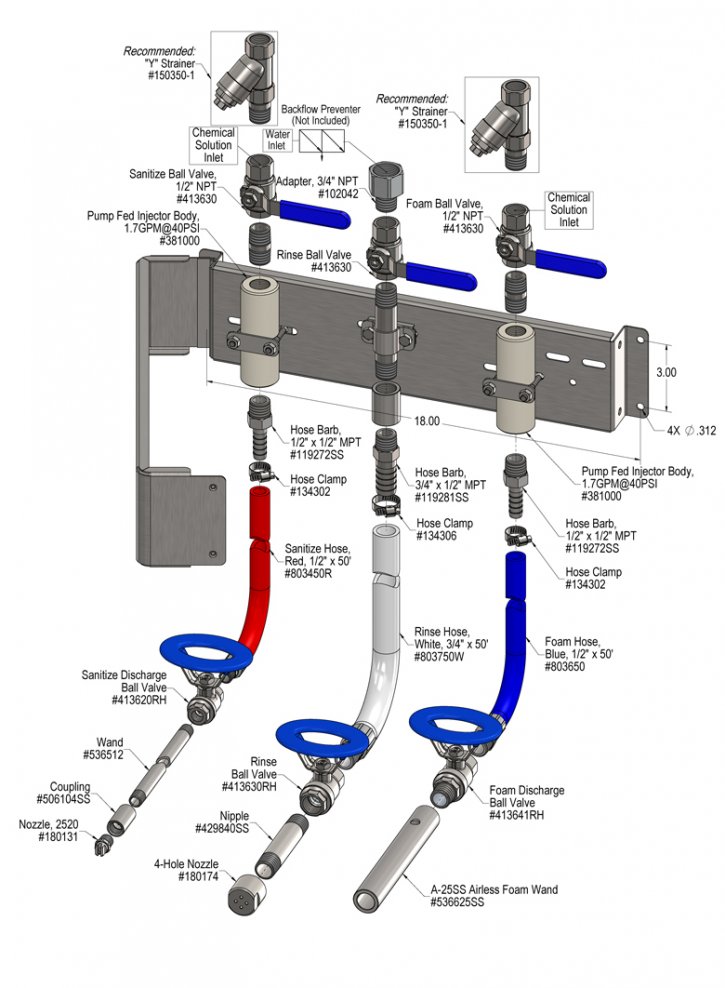Overview
The Pump Fed Sanitize / Rinse / Airless Foam Hose Drop Station is a combination applicator for projecting one ready-to-use chemical as a sanitizing spray and another as foam, without compressed air. This unit receives 2 separate ready-to-use chemical solutions from separate central chemical feed systems. Foaming chemical solution flows through the foam hose to the "airless" foam wand which draws in atmospheric air to create and project wet, clinging foam at distances up to 6 feet. The sanitizer solution flows through the sanitizer hose and is projected as a fan pattern spray. Rinse through the unique, powerful 4-hole nozzle.


